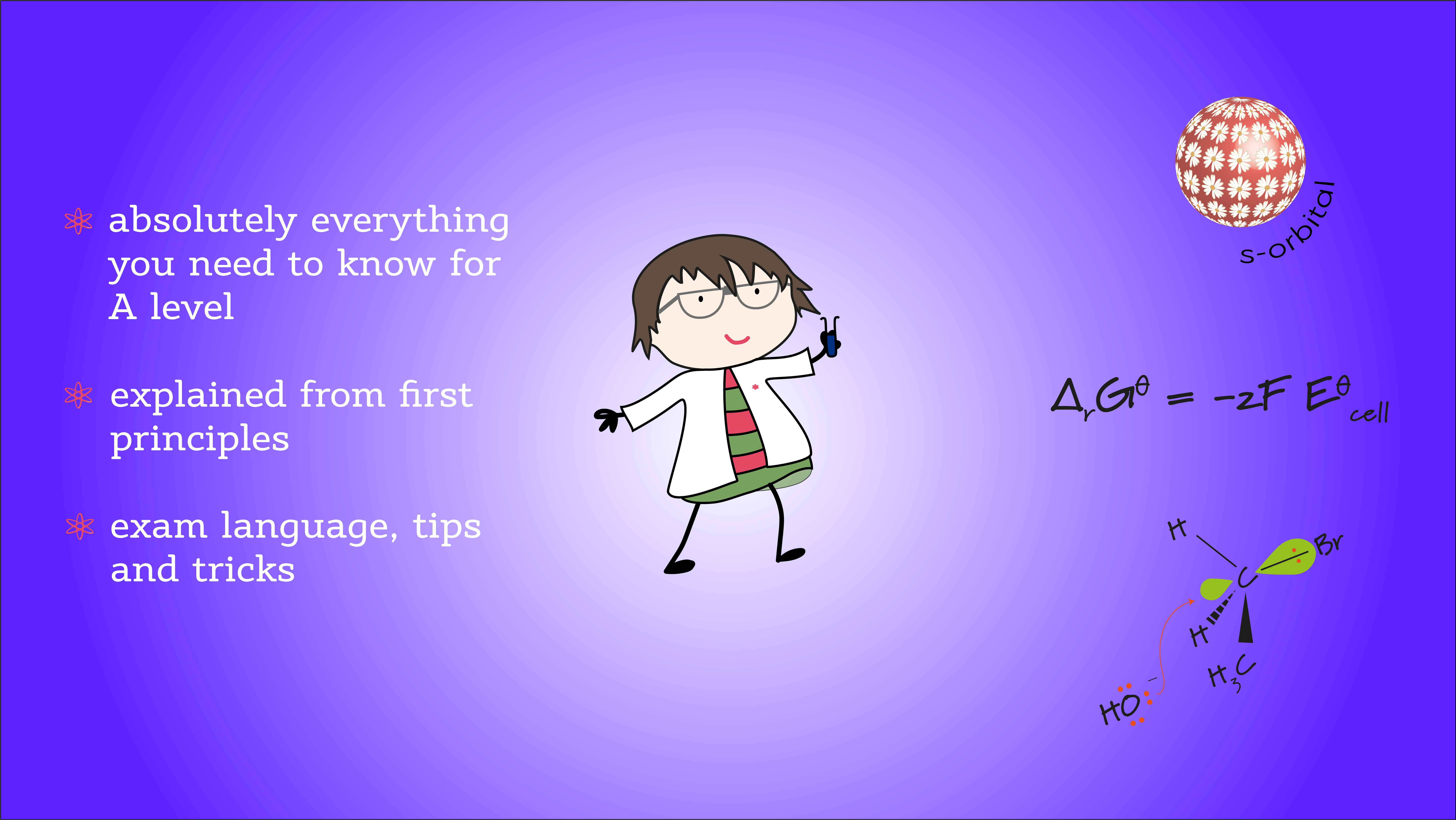Calculations for AS and A level Chemistry
Being confident in tackling different types of mole calculation is the foundation upon which much of A level chemistry stands
The ultimate A level chemistry resource

Being confident in tackling different types of mole calculation is the foundation upon which much of A level chemistry stands
This is a set of more difficult long answer exam questions that require you to use data from mass spectra,
Continue readingMixed spectra long answer exam question practice
24th NOvember 2025 Trending study hacks you should try (and a few you shouldn’t)! Powerful revision strategies and seriously effective
Identifying which ions we might have in a solution is known as qualitative analysis. The chemical tests we carry out
Continue readingHow to identify transition metal ions in solution
The ligands in a transition metal complex can be exchanged e.g. ammonia ligands replacing water ligands. This happens either because
Continue readingLigand exchange reactions in transition metal complexes
In aqueous solutions of transition metal ion salts, the metal ion is invariably part of a complex known as an
Continue readingUnderstanding the acid-base behaviour of aqueous transition metal ions
Structural isomers These are compounds with the same number and type of atoms but the atoms are bonded in different
One of the best aspects of Chemistry A level is that you get to do lots of practical work 😎.
Continue readingPractical techniques are not just for the lab!
when your answer is in fact just your working out … This is without doubt the most frustrating thing examiners
The coordination number of a complex is the number of atoms making coordinate or dative covalent bonds to the central
d-block metal cations readily form complexes with ligands – neutral molecules such as water or anions such as the chloride
I offer 1:1 online chemistry tuition for students who need a confidence boost, help with exam technique or a crash
The transition metals are d-block elements (Groups 3-12 of the Periodic Table) whose atoms have a partially filled d-orbital or
Continue readingWriting the electron configuration for a transition metal